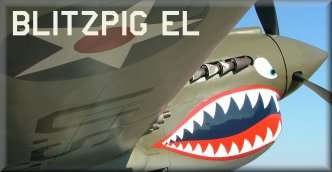
 |
|
|
|
#1
|
||||
|
||||
|
The D airframe's length is too short in the FM numbers. By around a foot as I recall.
Historically the early D production blocks were indeed more unstable owing to the loss of fuselage area that was cut down to make it a bubble top. The later blocks had the new tail fillet that attempted to cure the problem. The early blocks had the fillet applied in the field.
__________________
 Personally speaking, the P-40 could contend on an equal footing with all the types of Messerschmitts, almost to the end of 1943. ~Nikolay Gerasimovitch Golodnikov |
|
#2
|
||||
|
||||
|
You can see the length error in the Object viewer, the razorback mustangs are all 9.83m (the correct length), whereas the D is listed as 9.38m. Not sure if this translates into the FM though, anyone know?
|
|
#3
|
|||
|
|||
|
Same there, this is what gives a D a _slightly_ smaller stability. It's a known bug.
|
|
#4
|
|||
|
|||
|
Quote:
|
|
#5
|
|||
|
|||
|
Apply full rudder and check if you can measure a difference between the B and the D. This is where the slightly reduced length would show. It has no effect on turning.
|
|
#6
|
|||
|
|||
|
Wouldn't it also apply in banking turns?
If the plane is banked and the stick pulled, the elevators are "working" on the same plane of motion that the rudder affects when the wings are level (the plane that's parallel to the horizon), so wouldn't it exhibit a similar effect? |
|
#7
|
||||
|
||||
|
This ***could*** explain why total blackouts occur very suddenly in the D model, too much elevator for a shorter fuselage. This is only if the length bug is present in the FM though.
|
 |
| Thread Tools | |
| Display Modes | |
|
|